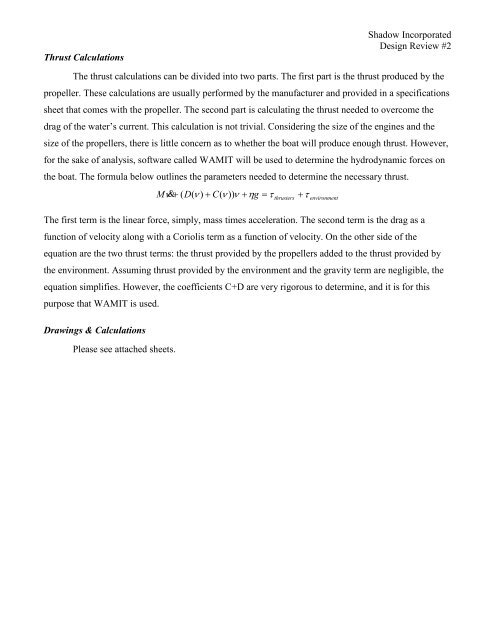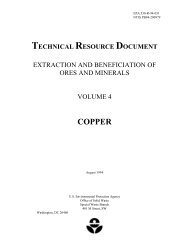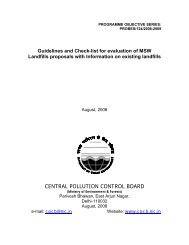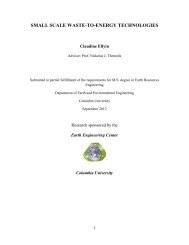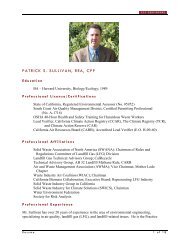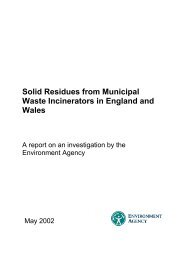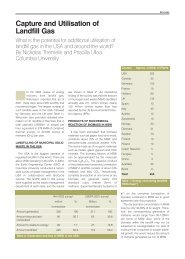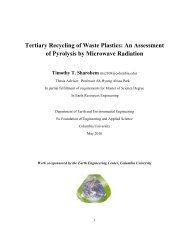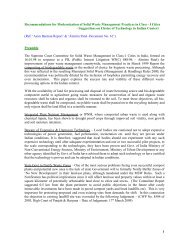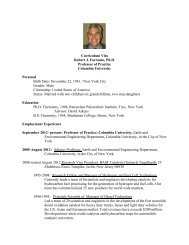Design Review #2 - Columbia University
Design Review #2 - Columbia University
Design Review #2 - Columbia University
Create successful ePaper yourself
Turn your PDF publications into a flip-book with our unique Google optimized e-Paper software.
Thrust CalculationsShadow Incorporated<strong>Design</strong> <strong>Review</strong> <strong>#2</strong>The thrust calculations can be divided into two parts. The first part is the thrust produced by thepropeller. These calculations are usually performed by the manufacturer and provided in a specificationssheet that comes with the propeller. The second part is calculating the thrust needed to overcome thedrag of the water’s current. This calculation is not trivial. Considering the size of the engines and thesize of the propellers, there is little concern as to whether the boat will produce enough thrust. However,for the sake of analysis, software called WAMIT will be used to determine the hydrodynamic forces onthe boat. The formula below outlines the parameters needed to determine the necessary thrust.M & ν + ( D(ν ) + C(ν )) ν + ηg= τ + τthrustersenvironmentThe first term is the linear force, simply, mass times acceleration. The second term is the drag as afunction of velocity along with a Coriolis term as a function of velocity. On the other side of theequation are the two thrust terms: the thrust provided by the propellers added to the thrust provided bythe environment. Assuming thrust provided by the environment and the gravity term are negligible, theequation simplifies. However, the coefficients C+D are very rigorous to determine, and it is for thispurpose that WAMIT is used.Drawings & CalculationsPlease see attached sheets.


